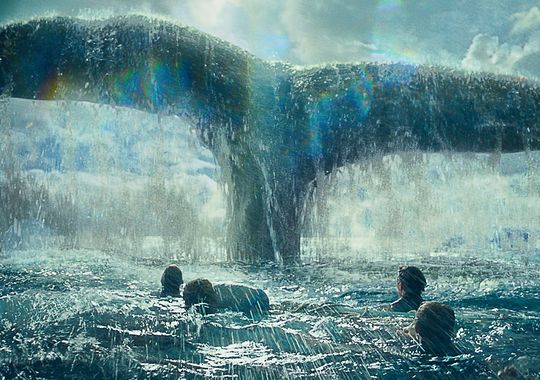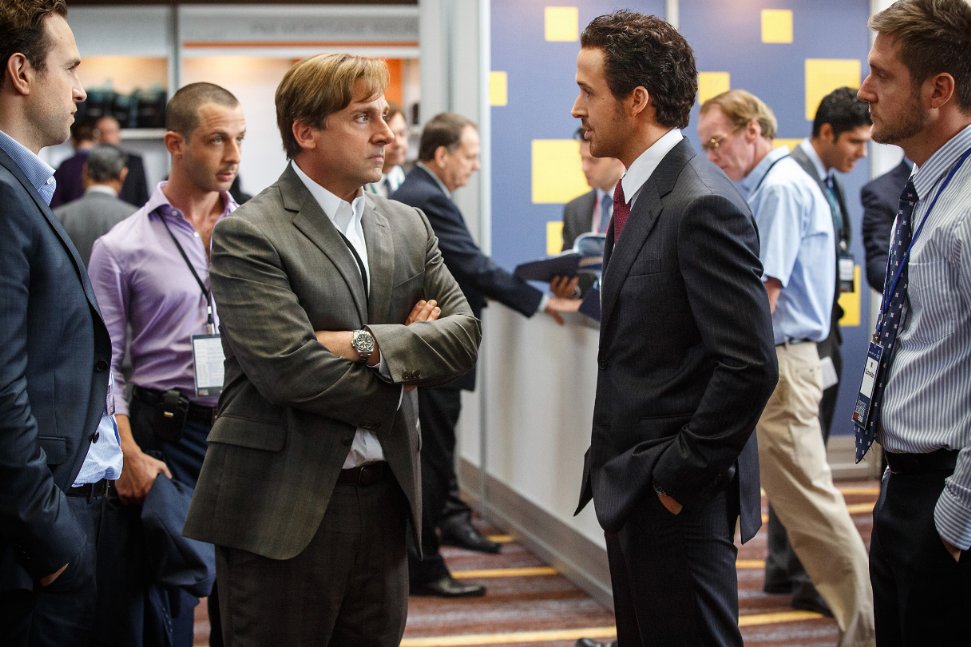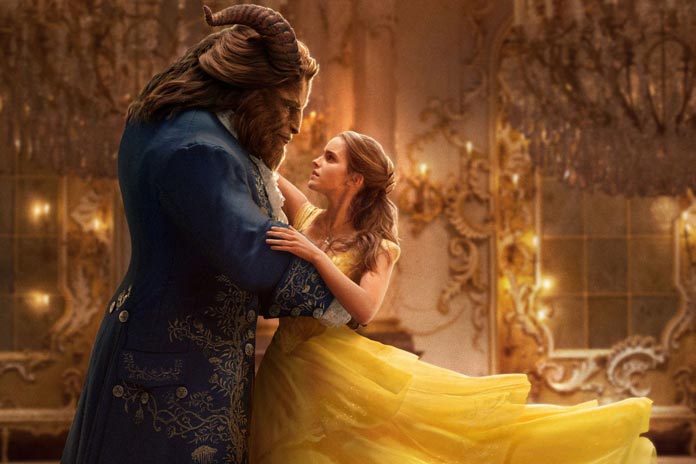I’m going to go out on a limb and make an assumption – I don’t think a Moby Dick origin story is high on anyone’s list. Is Melville’s universe one that’s ripe to be expanded? Ron Howard seems to think the answer is an unequivocal yes – so we have In the Heart of the Sea – an aggressively old-fashioned tale of heroism and humanity on the high seas. The true story of the Essex – a whaling ship from Nantucket – being attacked by a vicious white whale may have inspired the greatest American epic ever written, but this adaptation surely won’t inspire the next.
In the early 1800’s the American Northeast needed oil. In a pre-fracking world however oil wasn’t exactly the easiest energy source to come by. Instead of poking a hole in the earth the sweet nectar that lit the streets came from one place – whales. With the industry booming, Nantucket, Massachusetts had become the epicenter of the oil trade. Ships would leave by the hundreds – setting sail for all parts of the world in search of pods ripe for hunting. A bull could often yield 75 barrels of oil.
 To say this job was dangerous would be an understatement. After spotting a pod – whalers would launch tiny boats laden with spears and paddle after them. Once upon a target them would pierce the whales hide and ride the beast until they were exhausted and surface (this was known as a “Nantucket Sleigh Ride.”) After subduing the whale the crew would begin the gruesome task of deconstructing the body for the precious oil inside.
To say this job was dangerous would be an understatement. After spotting a pod – whalers would launch tiny boats laden with spears and paddle after them. Once upon a target them would pierce the whales hide and ride the beast until they were exhausted and surface (this was known as a “Nantucket Sleigh Ride.”) After subduing the whale the crew would begin the gruesome task of deconstructing the body for the precious oil inside.
Howard depicts this practice in gruesome detail. His protagonist is Owen Chase (Chris Hemsworth) – the first mate on the Essex. Chase is a simple man with aspirations of captaining his own ship and moving his wife and soon to be born child to the city. The brass in Nantucket promise Chase his own ship only after he swallows his pride and reports one last time to a new captain. This man is George Pollard (Benjamin Walker) – from a rich lineage of whaling captains Pollard is a man whose name affords him luxuries Chase can only dream of. He’s also a dunce cap with a sense of entitlement larger than his captain crunch hat.
After a harrowing early kill and a near disaster in a squall the Essex is floundering. Most areas in the mid-Atlantic have been completely scavenged. To collect even a fraction of what they have hoped the crew sets sail for the Pacific – around Cape Horn on the southern-most tip of South America. After collecting supplies on a small island the crew catches a tip from a stranded Spanish whaling captain that well off the coast in the south Pacific hundreds of sperm whales have congregated. It’s the furthest any ship from Nantucket will have ever traveled but the bounty could be plentiful. There’s just one small problem – there is a demon lurking in the waters near this pod, a white whale nearly 100-feet long – and he doesn’t care much for whalers.
Despite the crews objections Pollard and Chase agree they cannot return home with the small amount of oil they’ve acquired. So they set sail into the Pacific – roughly 3,000 miles from Easter Island. Upon arrival and much to the groups delight, hundreds of sperm whales are waiting for the Essex. As the crew draws closer to the pod it becomes clear the captain was right about one other thing – the pod includes a white whale, and it is pissed.
The following sequence is Howard at his most electric. He employs stunning overhead shots as the crew struggles to fight the creature that is at least twice the size of the Essex. The CGI (which is less than convincing for most of the film) finally complements Howard’s camera work to create wonderful spectacle.
After the attack the remaining crew of the Essex is stranded in 3-hunting boats. Their hope is to catch the Easterlies that will send them back toward Easter Island where help could reach them. The doldrums unfortunately don’t provide a ton of help – not to mention the 100-foot whale that’s not quite done tormenting our well-seasoned crew. What follows is a 95-day stretch that can only be described as a total bummer.
In the Heart of the Sea bookends the story with an interview between Herman Melville (Ben Whishaw) and Tom Nickerson (Brendan Gleeson) as Melville researches what he hopes will be his greatest work. Nickerson was a cabin boy on the Essex who has been haunted by the fateful voyage his entire life. The need for Howard to include this narrative device is unnecessary and bizarre. Surely after the 57 previews a week on television touting the film as the “inspiration” for Moby Dick we didn’t need the constant reminder that the book was written.
This feeling of safeness permeates Howard’s film and consistently undermines what could’ve been a truly classic tale. The casting of Hemsworth makes sense after his collaboration with Howard in Rush but his ridiculous handsomeness takes away from the films authenticity. Throw in a hysterically bad northeastern accent and the layer of artifice never recedes. The CGI never helps either. Especially early the film is interrupted too often by shiny, rubbery whales and ugly water effects. Only later when the infamous white whale arrives does the film ever find a convincing balance.
While Howard reaches for the grandeur and pathos of Melville’s epic he never comes close. If the focus had been on the crew and their incredible journey – In the Heart of the Sea may have worked dramatically better than it does. Instead we have many fantastic moments surrounded by a film that desperately wants to reach into the depths of the human soul. The film could have been a classic but instead settles for something else – heavy rotation on TNT for eternity.





